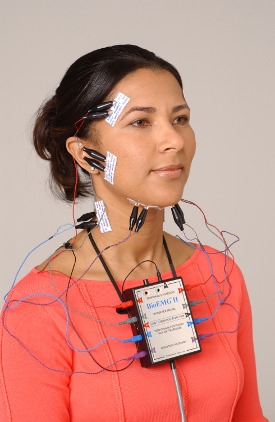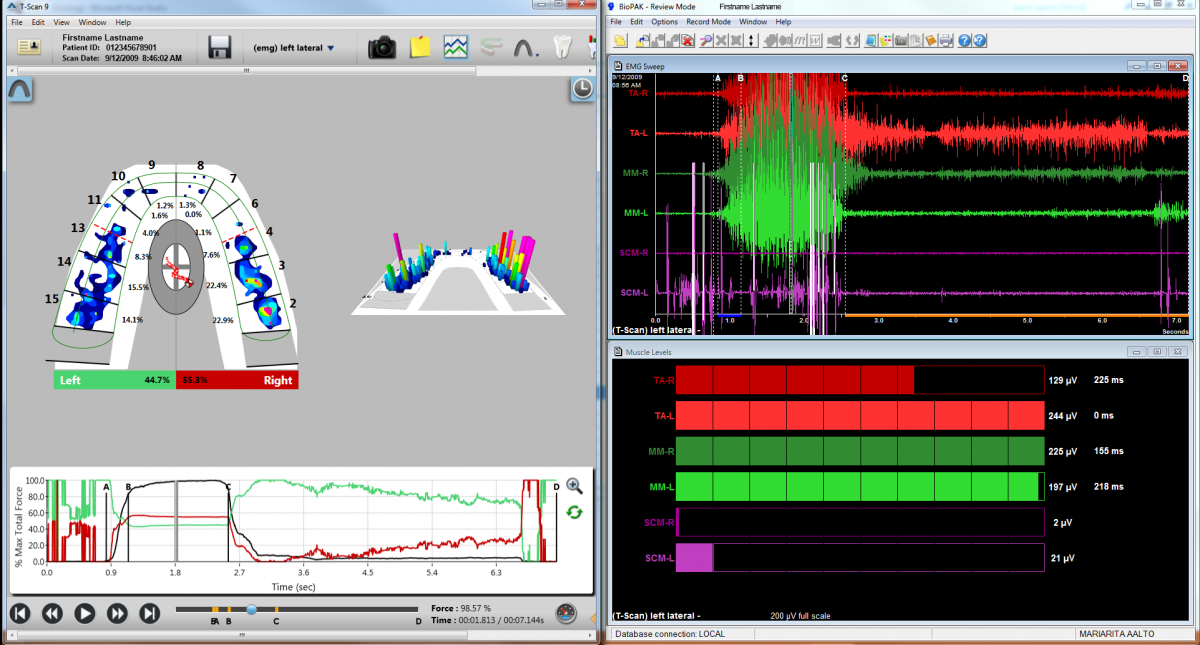
T-Scan/BioEMG Integration Software
Occlusion & Muscle Function
Tekscan has teamed up with BioResearch Associates, Inc. (Milwaukee, WI), an EMG Manufacturer specializing in dentistry, to provide a means for dentists to measure force, timing, and balance of the occlusion and craniofacial muscles simultaneously.
We have also teamed up with BioResearch Associates again to provide the clinician with a means to see the relationship between posture and muscle activity, and assess functional postural alignment and control.
This new technology is a first of its kind!
BioEMG Integration Add-on
Measure occlusal force, timing, balance, and muscle activity simultaneously for the first time in history.
Occlusion and Muscle Function
The T-Scan™/BioEMG Integration software synchronizes the clinical data of T-Scan with the electromyographic data of BioResearch’s EMG unit. Together, they give a complete view of your patient’s bite.
BioEMG measures muscular functions of the head and neck while the T-Scan shows occlusal contact timing and force distribution of teeth.
With both T-Scan and BioEMG programs activated:
- Initiate a recording in T-Scan automatically starts an EMG recording or vice versa
- Timing of data is synchronized in both the record & review modes
- The recording functions are the same as when using either program independently
- Saving data in one program auto-saves in the corresponding program
- Patient files are auto-labeled to identify integrated files

- Synchronized data can be taken in intercuspal position (IP), centric relation (CR), and excursive movements
- Save valuable time collecting and retrieving data
- Accomplish a more comprehensive and informative diagnosis
- Analyze and correlate specific occlusal moments to specific EMG changes that result from occlusal moments